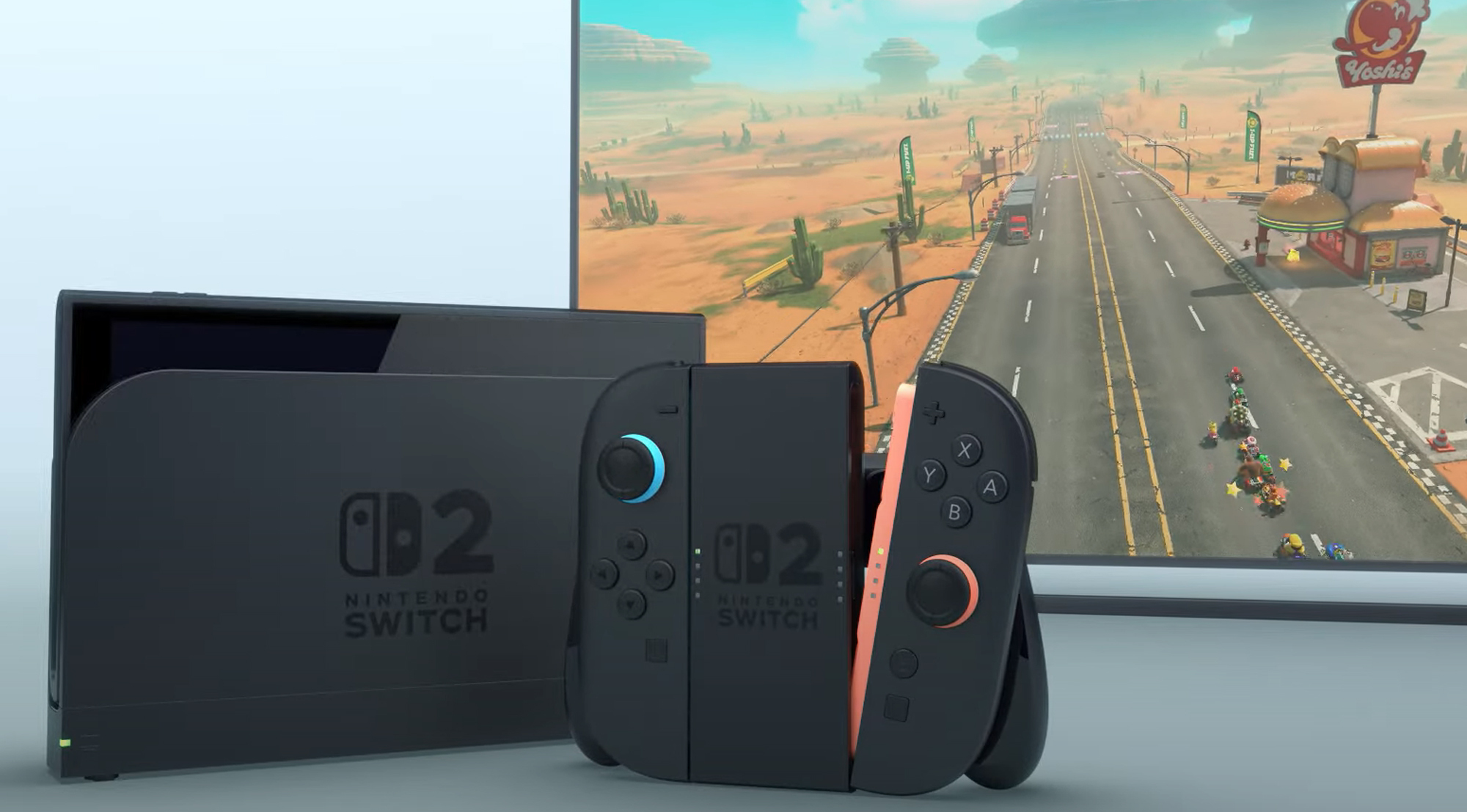Nintendo's Switch 2 is finally real, but I have one glaring question
This week, a teaser video showed off the Switch 2, but what's on the inside is the interesting question.

Nintendo has revealed the Switch 2: On Wednesday, April 2, 2025, company officials announced Nintendo would release the Switch 2 on June 5, 2025 at a cost of $449. Read the minute-by-minute live blog for the Nintendo Switch 2 announcement presentation.
After eight long years, the Nintendo Switch's successor is finally official.
On Thursday, Nintendo unveiled the Switch 2 in a brief but tantalizing teaser that showcased its external hardware. Naturally, there's a lot to unpack: new Joy-Cons, a bigger screen, a new look, a new Mario Kart game, and more.
But for as many hints as we got about what the Switch 2 will ultimately be, there's still one huge mystery — and the entire perception of the Switch 2 could depend on it.
What's under the Switch 2's hood?
For all that we've seen of the Switch 2 externally, there's still so much going on inside the console that we don't know for sure yet. Of course, there's no guarantee that the Switch 2 will have upgraded internals, but if I'm being honest, it would be unhinged not to.
The original Switch came out in 2017, and — though graphics prowess has never been a huge part of the Nintendo ethos — if Nintendo is to expand the variety and scope of the games people can play on its console, it needs to keep up with current technology.
Again, we don't know for sure, but some apparent leaks have given us a clue about what the Switch 2 is working with.
If these specs are to be believed — and we'll luckily find out soon enough — it does give the Switch 2 some major advantages over the original. One of those advantages would be DLSS, Nvidia's AI upscaling technology that adds frame rates to games.
Sign up to receive The Snapshot, a free special dispatch from Laptop Mag, in your inbox.
That might not matter when it comes to playing Nintendo's first-party titles (Luigi's Mansion has always been just fine without AI having to do the heavy lifting) but it could come in handy for playing titles that are ported to the Switch. More expansive games like The Witcher 3: Wild Hunt or The Outer Worlds, for example, that were ported to the Switch were technically playable for the most part, but maybe not the ideal experience in terms of visual fidelity or smoothness.
With a little AI boost in frame rate, however, and added RAM, the functionality of non-Nintendo titles might vastly improve which could theoretically make the Switch 2 a more fierce competitor with the growing array of handheld gaming PCs from Lenovo, MSI, Valve, and Acer.
Then again, there's a chance that, for some people, the biggest most glaring improvement to the Switch 2 might not mean much at all.
Nintendo Switch 2 Full Specs Leak: https://t.co/SHpAKymDAd pic.twitter.com/KUGzcfrgzkJanuary 15, 2025
More isn't always better
While it makes sense for many gaming companies to compete to make their consoles faster and stronger, Nintendo has always played on a different level.
The Switch, in particular, has always felt like an exception to the rule. While Microsoft and Sony used graphics technologies like ray tracing to sell their current (and probably future) generation of consoles, Nintendo focused on a different kind of success.
The Switch wasn't about making Mario photorealistic, it's about creativity, and in particular, an ingenious form factor. Nintendo set the precedent by allowing people to play handheld and docked for the best of both worlds, getting in early and setting the tone in a now-burgeoning new world of handheld gaming devices.
Introducing #NintendoSwitch2, the successor to Nintendo Switch, releasing in 2025. Learn more: https://t.co/m8FoQWfYcv pic.twitter.com/pDs2T1xIhvJanuary 16, 2025
And equally as important, it pushed the boundaries with form factor while also offering fun, creative additions to its beloved game IP.
If there's a lesson to be learned from all that success, it's that Nintendo and the Switch don't need a big spec boost to deliver a console that people love. And if a big spec boost is the most substantial difference between console generations, then it makes you wonder if the Switch 2 will re-capture the magic that made the Switch a success in the first place.
There's still a lot we don't know, to be sure, and Nintendo almost assuredly has surprises in store for the Switch 2 that its initial teaser didn't encompass. That's to say, it's too early to judge whether the Switch 2 moves the needle.
But I'm hoping that the Switch 2 will bring more to the table than a spec bump. If nothing else, we're one step closer to discovering if all the hype was worth it.

James is Senior News Editor for Laptop Mag. He previously covered technology at Inverse and Input. He's written about everything from AI, to phones, and electric mobility and likes to make unlistenable rock music with GarageBand in his downtime. Outside of work, you can find him roving New York City on a never-ending quest to find the cheapest dive bar.

